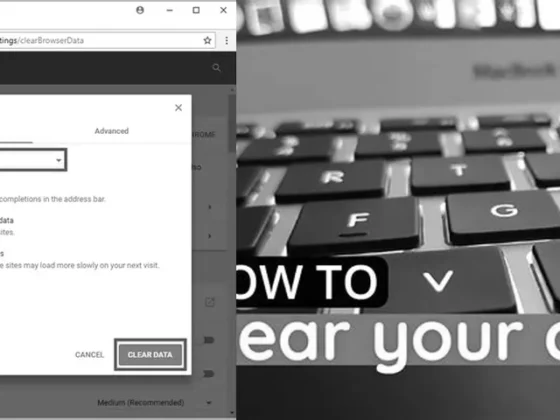How Can I Disable the Touchscreen on My Chromebook School? A Step-by-Step Guide: Are you tired of accidentally tapping on your Chromebook touchscreen and disrupting your schoolwork? Well, worry no more! In this blog post, we will guide you through the process of turning off the touchscreen on your Chromebook, ensuring a seamless and distraction-free learning experience. Whether you’re prone to touch-typing mishaps or simply prefer using a mouse, we’ve got you covered. So, let’s dive in and discover the simple steps to disable that touchy-feely feature on your Chromebook!
Understanding Chromebook Touchscreen Functionality
Chromebooks have become a staple in educational environments, offering students the versatility of a laptop with the added functionality of a touchscreen. However, there are times when disabling the touchscreen may be necessary, whether to avoid distractions, improve battery life, or simply because a traditional keyboard-and-mouse setup is preferred. Fortunately, Chromebooks include simple shortcuts to manage the touchscreen settings.
Disabling the Touchscreen on Your Chromebook
The process of turning off the touchscreen feature on a Chromebook is straightforward. By pressing the Search+Shift+T keys simultaneously, you can easily disable the touchscreen. This key combination acts as a toggle switch, which means that pressing these keys again will re-enable the touchscreen. This is particularly useful in classroom settings where educators might want to temporarily disable this function to focus students’ attention on specific tasks.
Step-by-Step Guide to Disable the Touchscreen
- Locate the Search key on your Chromebook’s keyboard, which is represented by a magnifying glass icon.
- Hold down the Search key and the Shift key.
- While holding these keys, press the letter T. This should disable the touchscreen.
- To confirm that the touchscreen has been disabled, try touching the screen. If it no longer responds to touch, the feature is off.
Remember that this feature is designed to be reversible, so you can always turn the touchscreen back on using the same key combination.
Turning the Touchscreen Back On
If you find that your Chromebook’s touchscreen is not responding, it may have been accidentally disabled. To reactivate the touchscreen, simply press the Search+Shift+T combination once more. The touchscreen should become responsive again. This quick fix is handy for troubleshooting issues where the touchscreen has been inadvertently switched off.
Alternative Method: Using Chrome Flags
If you’re looking for a more in-depth way to manage your Chromebook’s touchscreen or other experimental features, Chrome flags offer an advanced option. By navigating to chrome://flags in your Chrome browser, you can access a variety of experimental settings not typically visible to the average user.
Accessing Chrome Flags to Manage Touchscreen Settings
- Open the Chrome browser on your Chromebook.
- Type chrome://flags into the address bar and press Enter.
- Use the search function to find settings related to the keyboard or touchscreen.
- After making your desired changes, click on the ‘Restart’ button to apply them.
- Once the Chromebook restarts, use the Shift+Search+’T’ combination to turn off the touchscreen as needed.
This method provides more granular control and may unveil additional features that can be customized to enhance the Chromebook experience.
Understanding Human Interface Devices in Device Manager
For users more familiar with traditional operating systems like Windows, managing device settings is often done through the Device Manager. Chromebooks, while different in many ways, still maintain a concept of device management that can be accessed in various ways, one being through the Search box or Launcher.
Navigating to Chromebook’s Device Settings
- Press the Search key to open the Launcher.
- Type “device manager” into the search box, although note that Chromebook might not have an exact equivalent of the Windows Device Manager.
- Select the appropriate settings or controls that appear.
- Look for options related to Human Interface Devices (HID), which includes the touchscreen.
This process is similar to how one would navigate to device settings on other operating systems, reflecting a user-friendly approach to device management.
Benefits of Disabling the Touchscreen
While the touchscreen feature on Chromebooks is beneficial for interactive learning and ease of use, there are several reasons why one might choose to disable it:
- Increased Focus: In an educational setting, disabling the touchscreen can minimize distractions and help students focus on the task at hand.
- Battery Life: Turning off the touchscreen can conserve battery life, extending the time between charges.
- Preferential Use: Some users may prefer using a mouse and keyboard, finding that they work more efficiently without the touchscreen.
Conclusion
The ability to toggle the touchscreen on and off on a Chromebook offers users flexibility and control over their device’s functionality. Whether for reasons of personal preference, practicality, or troubleshooting, the process is designed to be user-friendly and reversible. By following the steps outlined above, anyone can manage their Chromebook’s touchscreen settings with ease, ensuring the device fits seamlessly into the educational environment or any other context where a Chromebook might be used.
Remember that technology is a tool meant to adapt to your needs, and with these simple tips, your Chromebook can do just that. Whether you’re a student, teacher, or just a Chromebook user wanting to tailor your device to your workflow, understanding how to manage your touchscreen is a small but significant step towards a more personalized computing experience.
FAQ & Related Questions about Turning Off the Touchscreen on a Chromebook
Q: How do I turn off the touchscreen on my Chromebook?
A: To disable the touchscreen on your Chromebook, press Search+Shift+T. Use the same key combination to turn the touch display back on.
Q: How do I turn on the touch screen on my Chromebook?
A: If the touchscreen on your Chromebook is not working, you can turn it back on by pressing Search+Shift+T.
Q: What should I do if the touchscreen on my Chromebook is not working?
A: If the touchscreen on your Chromebook is not working, try turning it on by pressing Search+Shift+T. If that doesn’t work, you can also try restarting your computer and disabling the touch screen through the debugging settings.
Q: How can I access the debugging settings on my Chromebook?
A: To access the debugging settings on your Chromebook, open the Google Chrome web browser and go to chrome://flags/#ash-debug-shortcuts. Locate the debugging keyboard shortcuts option and restart your computer. Then, press Shift + Search + T to disable the touch screen.
Q: Can I use my Chromebook without the touchscreen?
A: Yes, you can use your Chromebook without the touchscreen. By disabling the touch screen, you can use it like a standard laptop. To disable the touchscreen, press Search+Shift+T.


